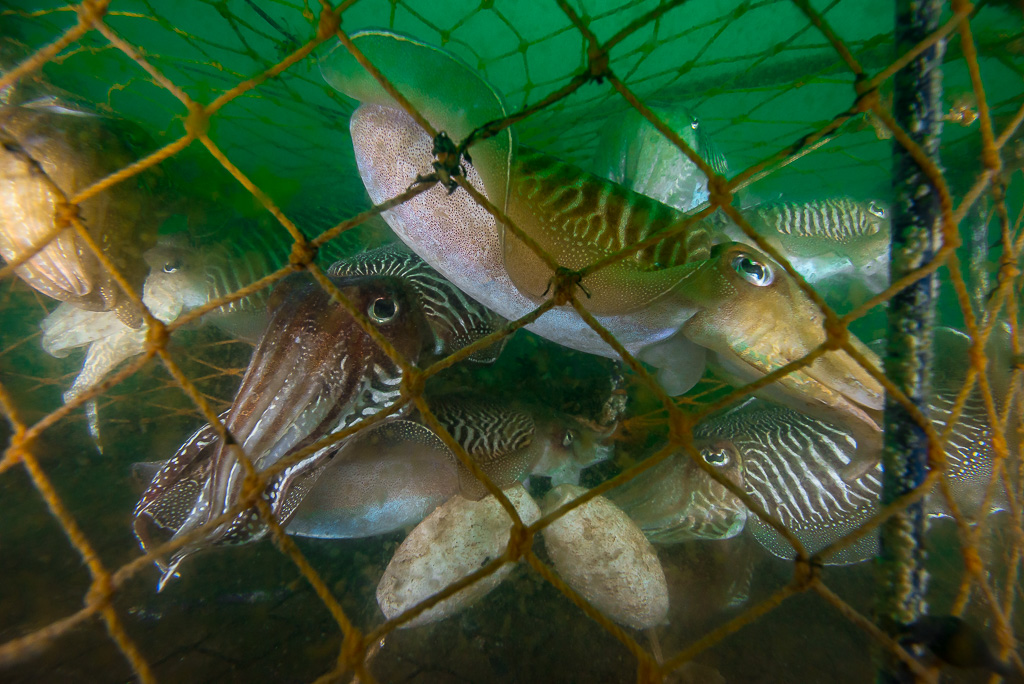In April 2020 during the Covid 19 lockdown I discovered the image above had won the BSoUP(British Society of Underwater Photographers) monthly competition on the theme of conservation. I had originally used the image in a blog post I did for O’Three drysuits in 2016 and had only thought about it again when I was searching for entries into the competition. It occurred to me that the backstory the post tells remains interesting and current. I returned to it, tweaked and updated it here & there……
My May Day Bank Holiday diving plans a few years ago were completely changed thanks to the low pressure weather system forecast to cross the UK. Rather than 3 days diving North Cornwall, I had a single day shore diving at cuttlefish hotspot Babbacombe beach Devon. Well protected from the predicted strong westerly winds, it is an area cuttlefish migrate to, in order to mate in April & May each year.
Shore diving is the one type of diving where I will often discard my rebreather and strap on a single cylinder. Much easier when clambering over the rocky beach and less of a worry that you are damaging kit as you flail around trying to get your fins off at the end of the dive.
Arriving at Babbacombe, the conditions appeared pretty good, the water looked clear over the shallows of the beach, unfortunately this was deceptive. The “May water” plankton bloom had arrived with a vengeance and reports of viz being only 1-2m with divers only completing 15 minute dives and moaning that they had travelled a long way for “that”.
After kitting up & with fellow photographer Jim Drake, we stumbled over the beach, I put on my fins then slipped beneath the surface. Viz looked better than had been reported and I headed out into the bay, there is a subterranean escarpment starting at about 3m where the seabed drops deeper. Here the true visibility became apparent, thick green blobs filled the water column and viz reduced to the reported 1-2m, very disappointing.
Purely by chance I stumbled across 2 cuttles in the gloom, they were as surprised by me as I was of them and they sped off out of visibility and I lost sight of them.
I spent nearly an hour in the water but it was not at all productive photographically. I wondered if I should bother going in again, everyone else was packing up & heading home.
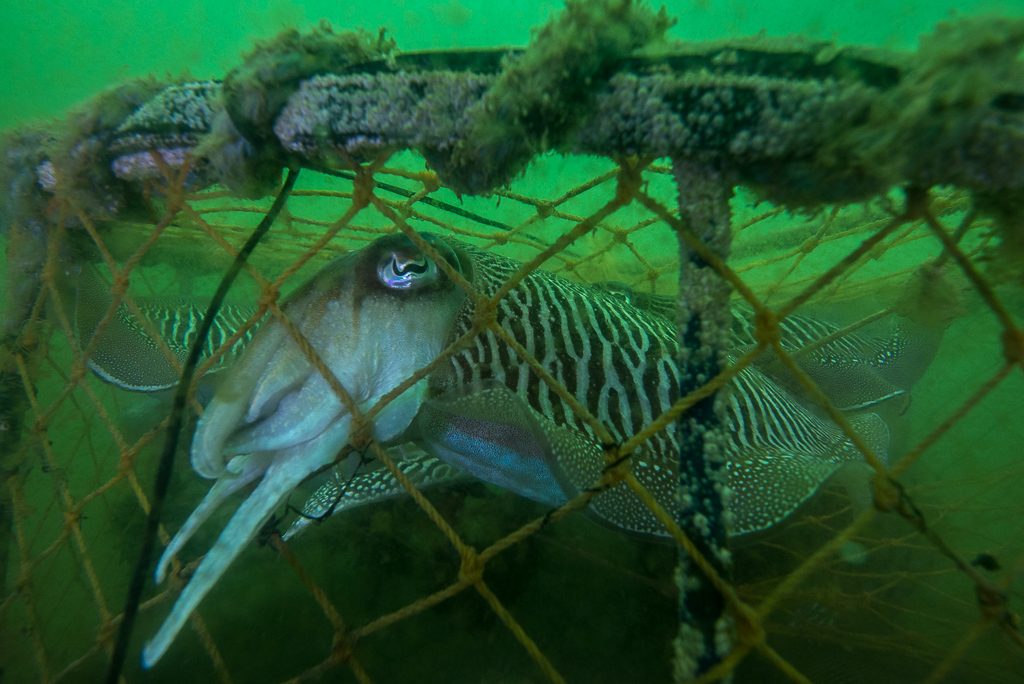
Cuttlefish are commercially harvested each year and a little way offshore from the pier a row of buoys marked the string of pots fishermen had deployed. There are no EU quotas for cuttlefish and there is some concern that this type of intensive fishing of the breeding area will adversely affect the cuttlefish population in years to come.
Here in the UK, cuttlefish are not often found on the fishmongers slab or even in upmarket seafood restaurants. Most of the catch is destined for Spain, Portugal, France & Italy but a significant amount also is destined for the Asian market. There seems to be an insatiable appetite for this fascinating and colourful cephalopod.
There are two sides to every story and fishermen are relying upon this catch for their livelihood, and by association the welfare of their families.
The Marine Conservation Society has recently changed guidance and currently (2020) cuttlefish fall into the red list; avoid if possible. If you want to know more check out this link:
http://www.goodfishguide.org/fishfinder?fish=Cuttlefish&method=&capture=&type=&min=0&max=5&results=
I decided to go in again, my second dive was to go out to the pots to see what had been trapped. I took a bearing from the end of the pier and headed off. It was not as far as I thought and before long I spotted a rope on the sea bed that I followed to a pot. Visibility was fractionally better probably a touch more than 2m, the depth was about 8m.
I could not believe my eyes, a circular pot about a metre diameter and 1/2m high lying on the sea bed, it must have contained 15+ cuttlefish.
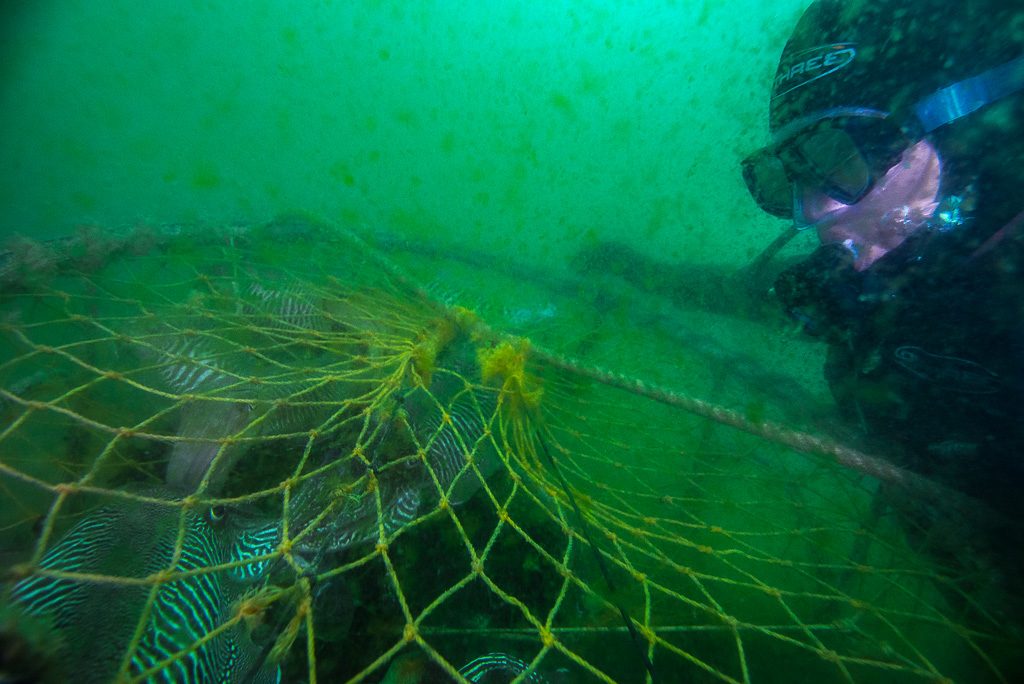
Some were ignoring their surroundings, more interested in being amorous with one another. Others were clearly distressed; repeatedly swimming against the netting walls of their prison causing injuries to themselves. It was not a sight I enjoyed witnessing. The outside of the pot had accumulations of eggs in several places and another cuttlefish loitering, oblivious to the mortal danger it would face if it entered the pot.
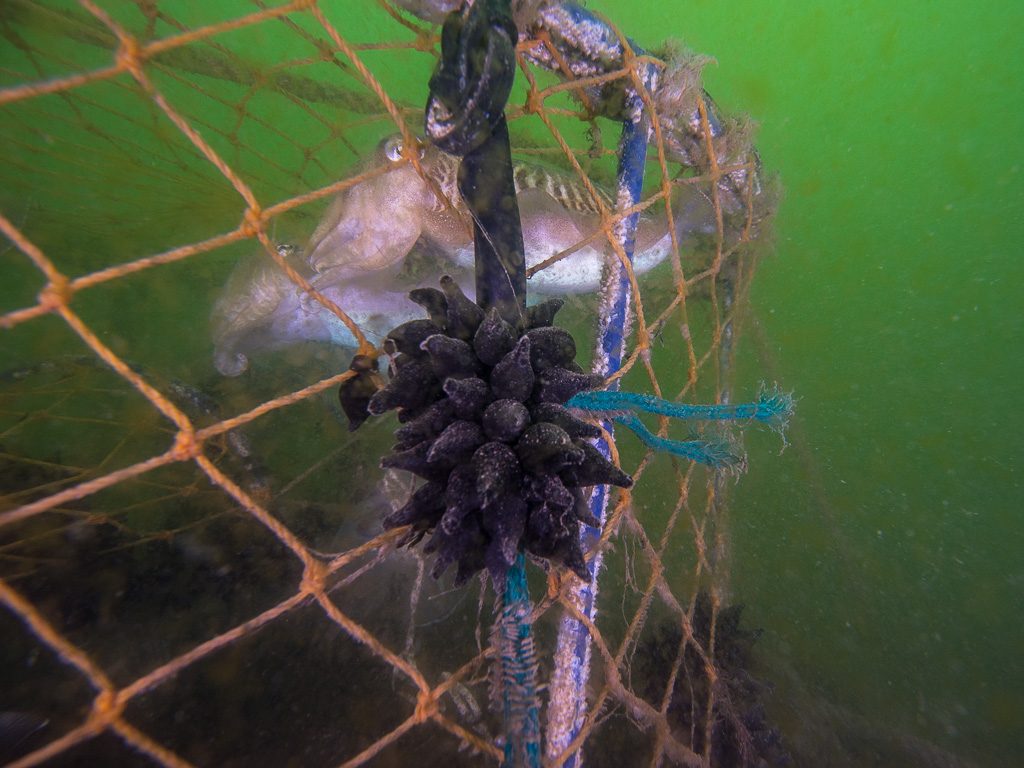
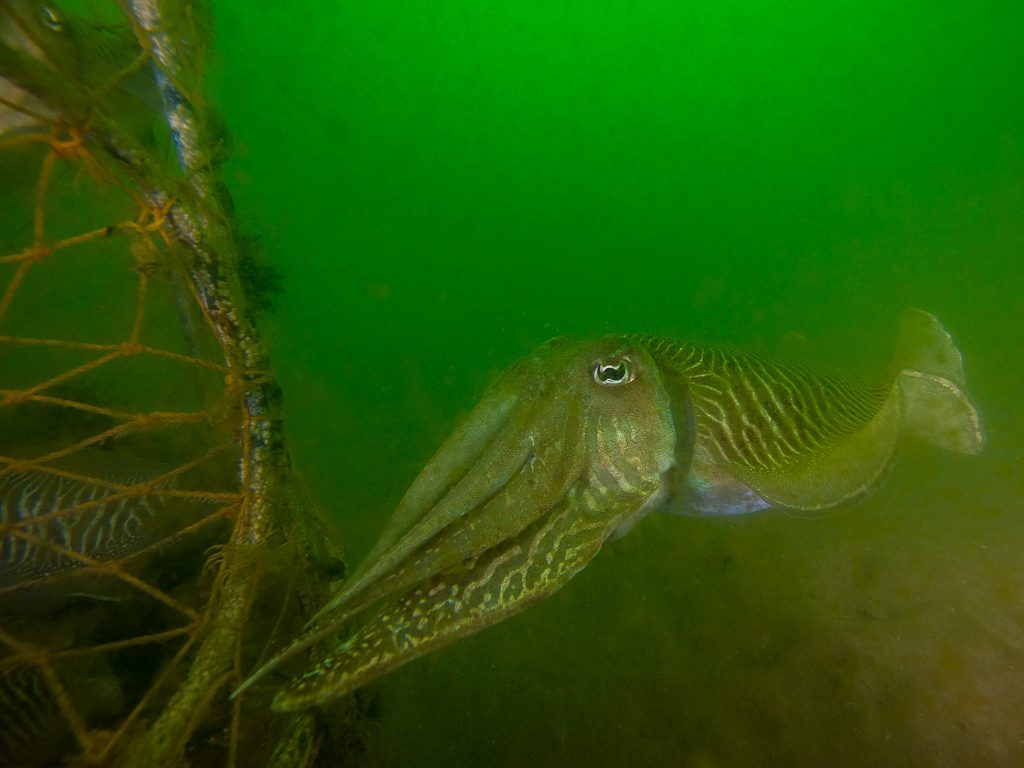
I spent some time attempting to get some images of the cuttles(the best are here!) then headed back inshore & finally was able to exit the water de-kit and consider. I was really pleased I had taken the trouble to go out to the pots, there are obviously still a lot of cuttles about which was encouraging. What I would really like to know is how has it changed year on year? Are the catches diminishing which would imply overfishing or are they remaining stable? This dive was from back in 2016, anecdotally regulars who dive Babbacombe would say it would now be unusual to see so many cuttles.
I am updating this blog post during the Covid 19 lockdown, with both the collapse of the market in Asia and Europe along with the necessary restrictions on the fishing industry, perhaps the cuttles will bounce back. It will depend upon the length of this lockdown and I hope marine scientists are gearing up to research this, as climate scientists are raving about studying newly clean air brought about by the lockdown.
The truth is that I would rather see these beautiful creatures swimming freely around the reefs and underwater vegetation of the bay. I can’t wait to be able to get my dive kit out and return to our plentiful waters once this Covid crisis passes.
I would also recommend checking out a couple of videos, taken by fellow diver and proprietor of Marine Vision Studios, Alan Mildren, links can be found on this page: http://www.marinevisionstudios.co.uk/page9.html
For the photographically interested all the images were taken with a Nikon D610 in a Nauticam housing, using YS110 strobes on low power, it looks like all the images were shot at iso800, f8.0, 1/200.

